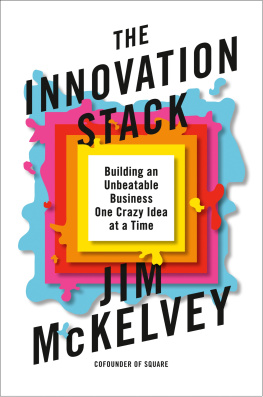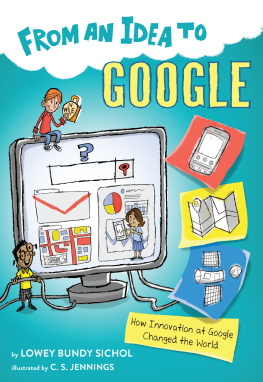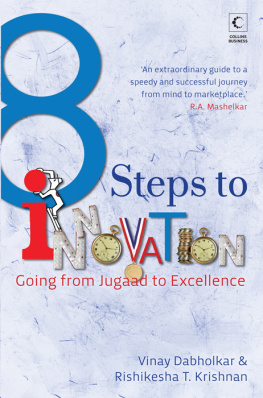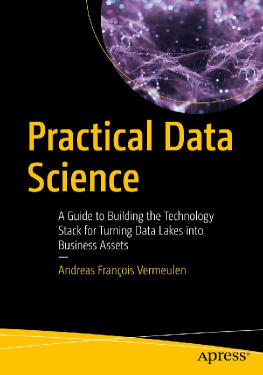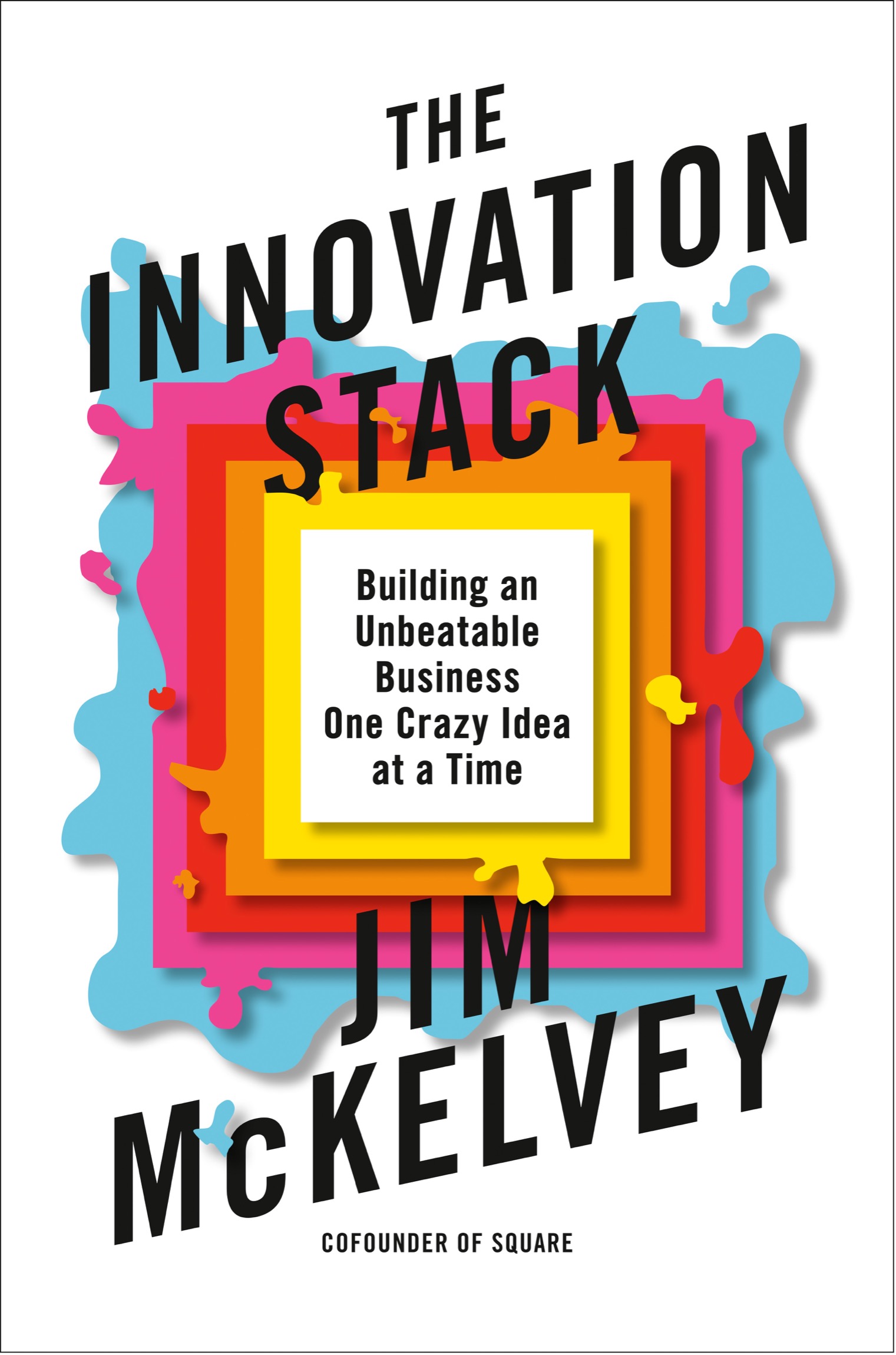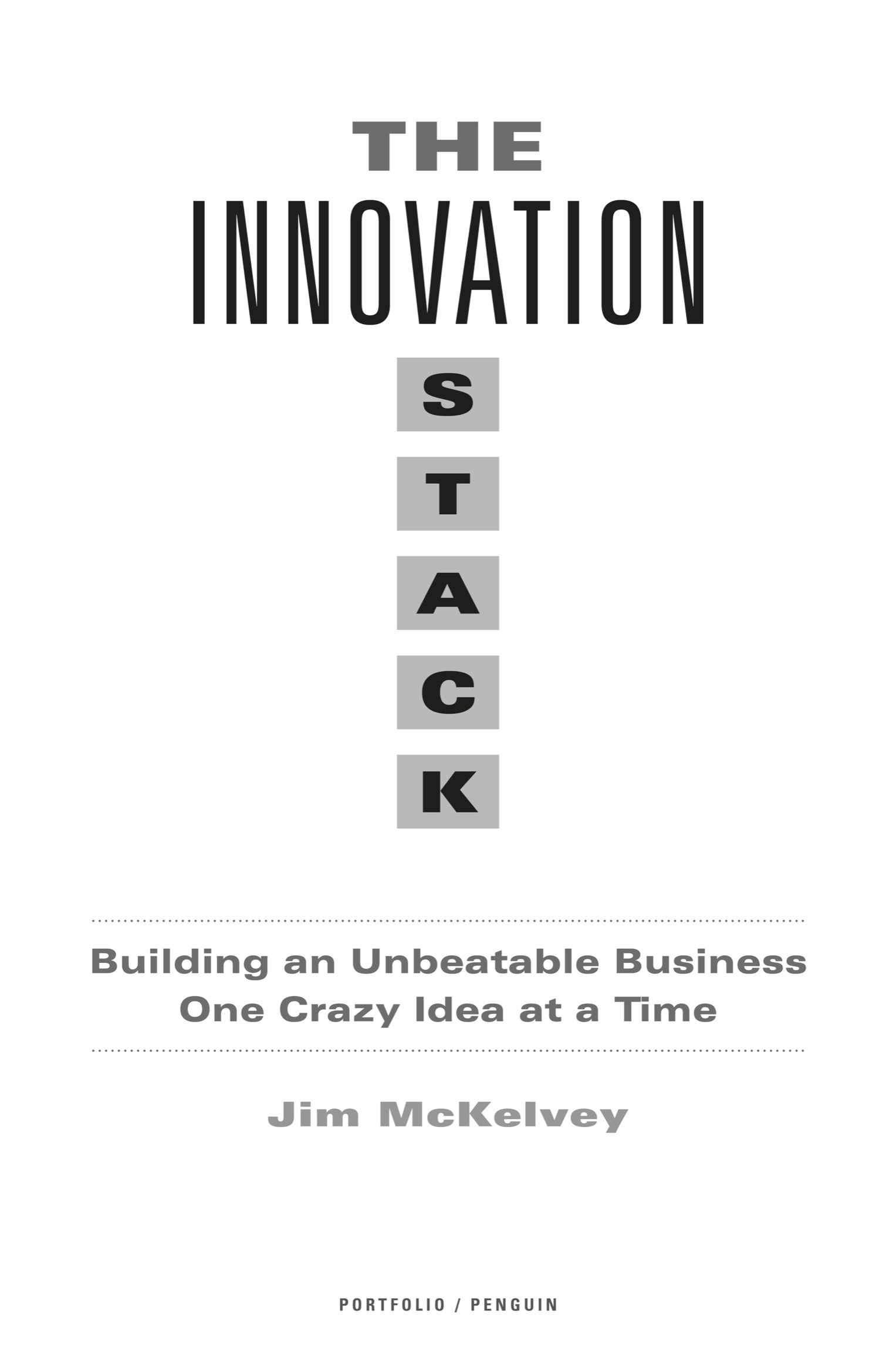Penguin supports copyright. Copyright fuels creativity, encourages diverse voices, promotes free speech, and creates a vibrant culture. Thank you for buying an authorized edition of this book and for complying with copyright laws by not reproducing, scanning, or distributing any part of it in any form without permission. You are supporting writers and allowing Penguin to continue to publish books for every reader.
Names: McKelvey, Jim, author.
Title: The innovation stack : building an unbeatable business one crazy idea at a time / Jim McKelvey.
Description: New York : Portfolio, 2020. | Includes bibliographical references and index. |
Identifiers: LCCN 2019046811 (print) | LCCN 2019046812 (ebook) | ISBN 9780593086735 (hardcover) | ISBN 9780593086742 (ebook)
Subjects: LCSH: Entrepreneurship. | Business enterprisesTechnological innovations.
Classification: LCC HB615 .M3785 2020 (print) | LCC HB615 (ebook) | DDC 658.4/21dc23
Penguin is committed to publishing works of quality and integrity. In that spirit, we are proud to offer this book to our readers; however, the story, the experiences, and the words are the authors alone.
Introduction
SUDDENLY , we won.
For over a year, a giant monster had chased us through the graveyard of corporate corpses. Amazon, the scariest monster on the planet, had copied our product, undercut our price, and was going to eat our brains. Then, without warning, on Halloween in 2015, the monster stopped the attack and handed us a treat.
This treat was better than any bag of candy. Not only did Amazon discontinue its competing product, it also mailed the products existing customers a little white Square card reader in a smiling cardboard box. Happy Halloween! Was this a trick?
Square, the little company that I cofounded with Jack Dorsey back in 2009, had just done something amazing. The odds of surviving an attack by Amazon would depress a Powerball player, but there we were, still alive after going nose-to-toe against the worlds most dangerous company. Was this just luck, or had something else happened? I knew what we had done, but I didnt have any idea why it worked. I spent the next three years answering that question, and eventually wrote this book.
This is not the story of Square. Instead, it is the story of how founding Square led me to discover a phenomenon that applies across industries and even time. Square is a good example because I can tell the story firsthand; but if this were just about Square, I would not have written this book.
What happened at Square was no accident; it fit a pattern. Its a pattern that repeats in a shockingly regular manner; and when it does, the companies that harness it become the biggest of their kind in the world. Patterns are funny things, for you can see them your entire life without ever noticing them. But once you finally notice, they appear everywhere. When I learned to notice this pattern, it was like finally seeing the world in three dimensionsI was still looking at the same objects, but now everything had depth. My enhanced vision revealed even more patterns. Patterns that have changed the world.
One of these patterns often appears in businesses whose aim is to square upbring fairness to a previously unfair system. Squaring up can spark a series of interlocking inventions I came to call an Innovation Stack, one of the most powerful assets a company can possess.
Innovation Stacks evolve, mostly driven by a survival instinct. If you try to do something truly new, you will encounter a series of new problems. The solution to one problem leads to another problem, sometimes several. This problem-solution-problem chain repeats until you end up with a collection of both independent and interlocking inventions. Or you fail.
We dont see the failed Innovation Stacks because they are never completed; and although the successful ones can be hard to notice, Innovation Stacks are at the core of world-changing businesses throughout history. This book will show you how to see them.
Building an Innovation Stack all begins by choosing to solve a problem that nobody has solved before. Squaring up, righting a wrong, or solving an unsolved problem forces you to be creative even if you dont want to be. Thats OK. Oysters dont choose to make pearls.
Squares Innovation Stack helped millions of people make sales and get paid. It fueled such massive growth that our payment volume doubled every other month for three years. It also, amazingly, protected us from a direct assault by Amazon. But Square was not the only company to successfully wield such power.
Innovation Stacks are hard to see in the present. You can view them more easily by looking back in time, for they change the course of history. In fact, much of history is simply a chronicling of ancient Innovation Stacks. From the thousands of examples that illustrate this principle, I have chosen four to examine closely. Square is one of them.
But this book is not just about world-changing companies. I want to introduce you to the people behind these firms, and show you what is extraordinary and ordinary about them. Business stories tend to have too much hubris and heroics, and too little humor and humility. So were going to meet some famous entrepreneurs, but perhaps not in a way youd expect. For I also intend with this book to dispel the myth that entrepreneurs are somehow uniquely gifted.
Entrepreneurs are rare, extremely so. But their skill set is not so uncommon, and I believe it to be something you already possess. It comes down to making a single choice: taking on a problem nobody else has ever solved and doing whatever it takes to solve it. The first step is finding a problem that is perfect for you.
There are no checklists in this book. I would love to be able to hand you a map, but maps are for tourists and not explorers. The maps Ive drawn from my own explorations wont help you, but an Innovation Stack will. It will protect you from the attacks of massive competition. It will allow you to do things once considered insane or impossible. And, if you dare to build one, it will move us all forward and leave your mark on history.
Lets go.
PART 1
SOLVING A PERFECT PROBLEM
CHAPTER 1
Entrepreneurs and Perfect Problems
BEFORE stalking got such a bad reputation, I was pretty good at it. My target was always the same: some famous businessperson. Entrepreneurship was not taught in school at the time,
It was a good offer. Ride sharing was twenty years in the future and St. Louis taxis were run by a cabal of incompetent crooks, as if the grandchildren of the Three Stooges had joined organized crime. Cabs would routinely miss pickups or take the scenic route. I got the speakers to their flights with a minimum of pine scent, and all they had to do was share some knowledge. My technique worked every time except once.

